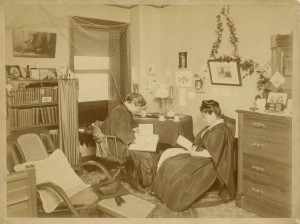My project proposal follows the excellent work of the Black @ Bryn Mawr project. In the same way as it is vital to chronicle and celebrate the history and present black experience on campus, it is also vital to do the same for other minorities. My original proposal idea was for a Humans @ Bryn Mawr project, encompassing the various ethnic, racial, religious, gender, sexuality, and other lived experiences on campus. However, as both time and space are pressing, I have narrowed the focus of my proposal to the Asian(-American) experience, while allowing the Humans @ Bryn Mawr concept to live on in the section expressing the need for such a project.
I have selected the Asian(-American) population for this proposal because of the large minority of Asian(-American) students that make up the school’s demographic. The reasoning behind the parentheses in the descriptive term “Asian(-American)” is to also include the large number of Asian international students within the bounds of the proposed project. Both minority groups are prominent within the campus makeup, but their voices are not heard and their experiences are not celebrated within the campus’ historical discourse.
The project will take a number of cues from the Black @ Bryn Mawr project: I propose a similarly-styled walking tour with a virtual offering and a blog presence posting updates with both archival artifacts and modern-day experiences. Beyond that, I propose a moderated public forum connected to the virtual footprint of the project. Such a forum would offer community engagement and allow for greater intersectionality between campus groups. The moderation would provide the project coordinators to fact-check contributions, as well as responsibly (and, hopefully, transparently) handle internet “trolls” and other inflammatory content. Further, I propose that physical exhibits and presentations would be designed by the Asian(-American) @ Bryn Mawr project. Such exhibits and presentations would be part of Community Days, library/archive events (such as Friday Finds), and other campus events of note.
Like the Black @ Bryn Mawr project, much of the research would be within the campus archives in the form of personal effects (diaries, photographs, scrapbooks, etc), class yearbooks, college news articles, and administrative data (such as the Tidmarsh report on the history of race on campus from early in the semester’s readings.) Some external readings, such as Nimura’s Daughters of the Samurai would also be of use in describing the historical Asian(-American) experience.
The 1890 photograph of Ume Tsuda, Bryn Mawr’s first Japanese student, studying in a classmate’s dorm room is representative of several facets of the Asian(-American) @ Bryn Mawr project. It is the type of archival material that would be present both on the blog and within exhibits, displays, or presentations. Further, it could also be a stop on the walking tour, describing student life and experiences.

